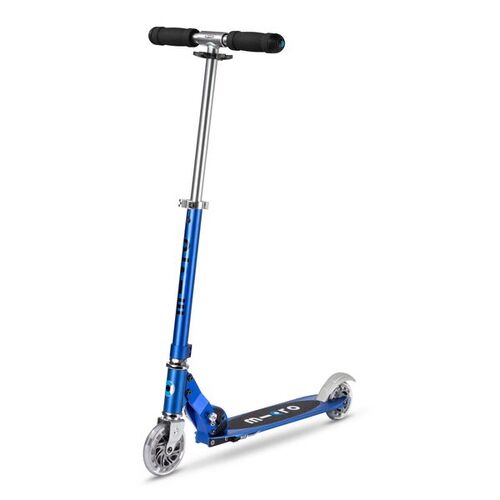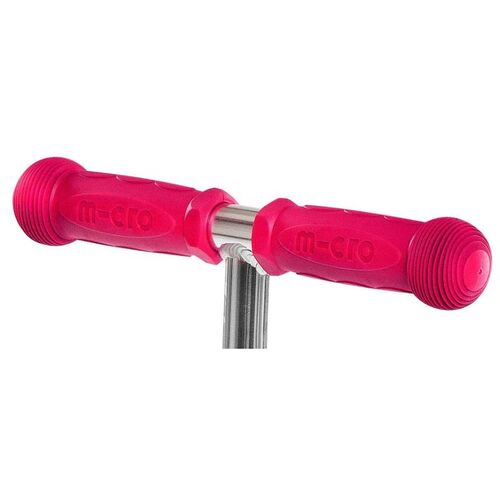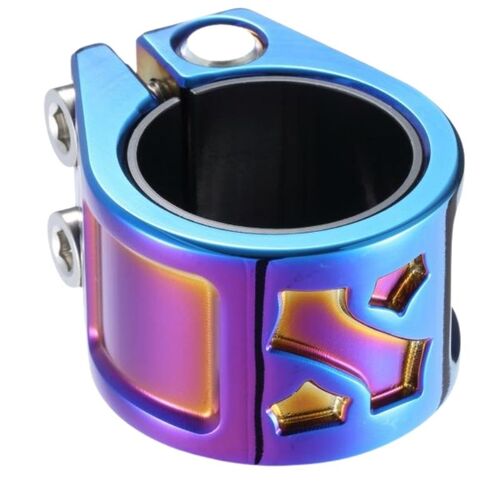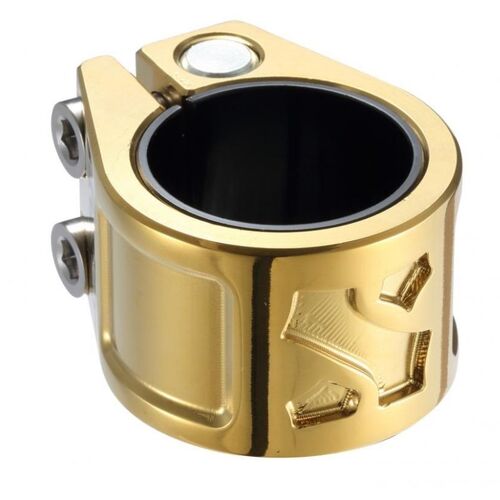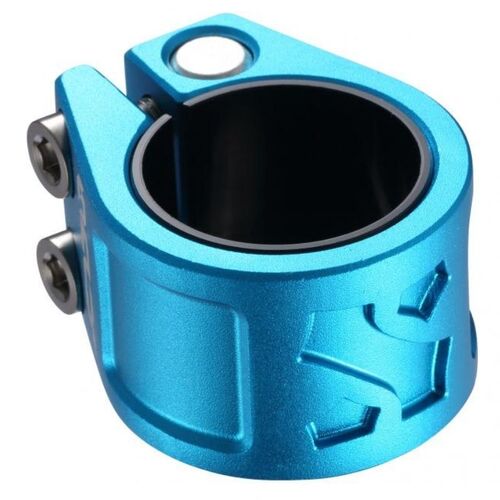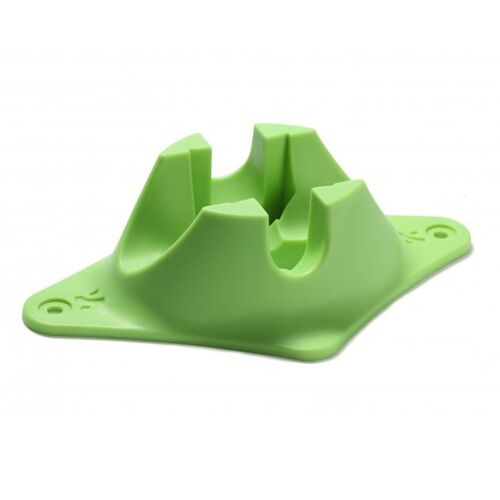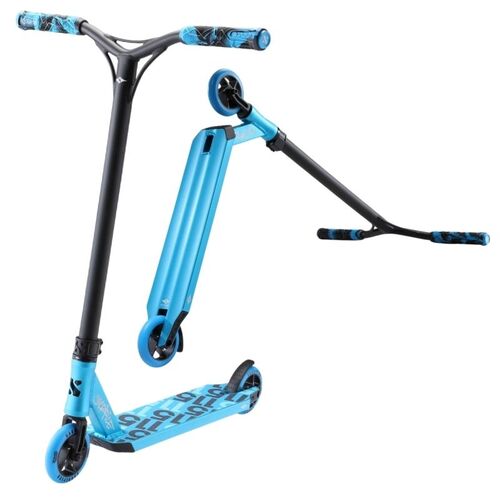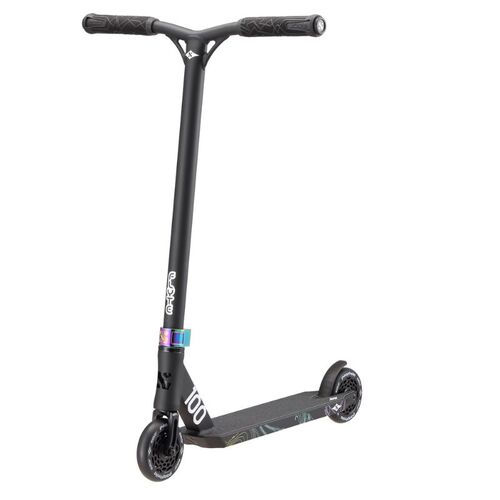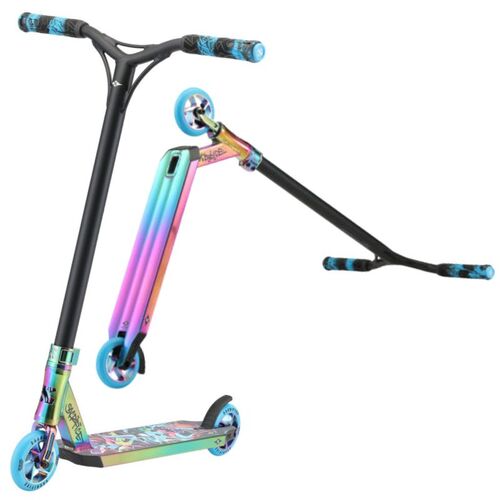Scooters
Products
Products
Scootering for beginners:
If you’re just starting out and want to get into scootering we suggest going with a good quality complete instead of a custom scooter. With a complete scooter you will have everything you need to start doing tricks and going to the skateparks and whilst you are still learning it will be more affordable than a custom scooter. At Henrietta’s we have a variety of Sacrifice and Envy scooter completes to choose from to get you started. Once you have an understanding of what type of scootering you’ll be doing and have found your style you can then look into picking all the parts for a custom scooter to suit your riding.
Decks:
One of the biggest and main components of a scooter is the deck. This will be the part you’ll be standing on so you’ll want to make sure when picking one out that it is the right length and width for your feet and if you want a boxed or pointed deck. Mainly comes down to personal preference so choose a deck that you feel comfortable on and accommodates enough space for your size foot.
Bars:
Bars are another important component that come in a few types of materials (steel, titanium, aluminium),shapes, heights and widths. When buying bars the height doesn’t matter as such as they can be cut down and fitted to the right size for you. Park scooter riders prefer lower and narrower handlebars due to the tricks they do in the skatepark.
Street riders prefer taller and wider handlebars for better handling even at high speeds. Taller handlebars are also better for doing higher bunnyhops.The lightest and strongest bars are made of titanium but are more expensive and the heaviest being steel, aluminium are between those two for weight but are the weakest material of all three. Some bars can have back-sweep which is the tilt of the crossbar towards the rider. Up, down or backwards tilts are good for a more comfortable hold of the handlebars. In general, wider handlebars are more comfortable with back-sweep towards the rider. Zero back-sweep handlebars have the handlebars completely straight so that there is no tilt. Shapes of bars such as T shaped bars are lighter than Y shaped bars but Y shaped handlebars are stronger.
Compression Systems:
There are four types of compression systems for custom scooters: ICS, HIC, IHC, SCS.
ICS - Installs into bottom of bars with the steel star nut grabbing onto the downtube on the inside. A less popular system as more functional options are available. Best results when used on aluminium bars
HIC - Only for use with handlebars that have an inner diameter of 31.8 mm and outer diameter of 34.9 mm. If your handlebars do not match these specifications, the HIC compression system will not be compatible. Has good stability between the fork and handlebar connection as it is a fixed connection that won’t get loose over time.
IHC - Compatible with slitted steel handlebars that have an outer diameter of 31.8 mm and inner diameter of 28.7 mm. Also, slitted aluminium bars that have an outer diameter of 34.9 mm and inner diameter of 28.7.The IHC system has one difference from the HIC system. It can be used with a standard sized handlebar with an inner diameter of 28.7 mm. Has good stability between the fork and handlebar connection as it is a fixed connection that won’t get loose over time.
The IHC system isn’t recommended to be used with other compression systems.
SCS - The most popular and efficient compression system is the SCS system. SCS is highly compatible with most headsets as well as being a 2-in-1 system that combines a compression system and a clamp. It also fits any non-slitted handlebars but most importantly in the case that your handlebar does have a slit it is integral to cut the slit off or insert a steel shim inside the handlebars as it will not work otherwise.
Forks:
Forks are there to hold the bars and the front wheel. They come in a few different types depending on what compression system you chose. Once you know what compression system you are going with, check the compatibility of the fork on the manufacturer’s website for proper fitment. Something to remember is oversized bars go with HIC/SCS forks, which can be interchangeable between each other, and standard size and aluminum bars go with IHC forks.
The ICS forks can be mostly used with the SCS / HIC compression systems, occasionally after some minor modifications. IHC forks are not recommended to be used with any other compression systems. Also If you’re thinking about weight, aluminium forks are lighter than the heavier steel forks.
Grips & Bar-ends:
Grips come with bar ends. Some grips come with two sets of bar ends; a set for aluminum bars and another set for all other bars.
Headsets:
- Threaded headsets
Headsets are located underneath the clamp and make the handlebars and forks spin.
There are a few types of headsets that are used in scooters. The cheapest and most basic headset found in cheap, entry level scooters are threaded headsets. Mostly made up of steel, their performance is not nearly as smooth and silent as threadless headsets.
- Threadless standard headsets
The most basic threadless headsets are the same as threaded headsets, they just have a different cover cap that allows for the use of a threadless fork. Not very common on scooters in the market. They are designed to be used in combination with threadless forks and a standard deck headtube.
- Threadless integrated headsets
The most popular and widespread of all headsets is the threadless integrated headset.They come with industrial bearings and are mostly fully sealed. The caps are mostly made of aluminum and have a very smooth and quiet performance. Designed to be used with threadless forks and an integrated deck headtube.
Wheels:
Wheels come in a variety of designs, colours and sizes. With designs, some will be lighter than others depending if they are hollow or have cut-outs or are solid throughout. There are several different wheel diameters in the market today: 100 mm, 110 mm, 115 mm, 120 mm and 125 mm. In relation to all the threadless and one-piece forks, 100 mm and 110 mm wheels are compatible as a standard. A large percentage of forks can also accommodate 120 mm and 125 mm wheels. If you want to use 120 mm or 125 mm wheels check your current forks, deck and brake to see if it is compatible. Something to remember is the larger the diameter, the faster the wheel is and the better it will overcome minor surface bumps and cracks. Also, like with all wheels, soft wheels will be slower, more grippy and better on rough surfaces and harder wheels will be the opposite of that.
Bearings:
Most wheels come with pre-installed bearings but double-check before purchasing as you may need to acquire them separately. With bearings on the ABEC scale it goes from slowest to fastest numerically, ABEC 1 being the slowest and ABEC 9 being the fast high-performing bearing. For additional performance Henrietta recommends looking into Swiss or Ceramic bearings as they are the fastest and highest quality types of bearings available.
Clamps:
There are several types of clamps such as single, double, triple and quad clamps (in relation to the number of bolts). Something important to remember is if the bar is designed for a double clamp it is highly recommended to use a double clamp as you can damage the bar by using a different type of clamp such as a triple or quad clamp, so always make sure to follow the specifications of the bar manufacturer.Clamps are available in 2 different diameters to suit the different sizes of the bars. 32 mm clamps will fit on standard bars and 34.9 mm clamps fit onto oversized bars. Some 34.9mm clamps will include a shim to make the inner diameter 32 mm, which allows for use on standard and oversized bars. SCS clamps have built-in compression systems and function as a clamp as well as a compression system. With SCS clamps your bars cannot have a slit as the compression system will not work on your scooter.
Brakes:
Most decent freestyle scooters will come with a flex brake. A flex brake will be made of steel, plastic or a mix of both materials.They bend on the wheel to brake and give you a more consistent, controlled braking response. If you still have a spring brake, which are common on cheaper, entry-level scooters, think about changing your setup if you are wanting to get more serious into freestyle riding.
Commonly you will find that you usually need to use the brake made for your deck. All brands will have replacement parts to choose from and if you do want to change to a different style brake, you can first check compatibility and try a universal brake.


